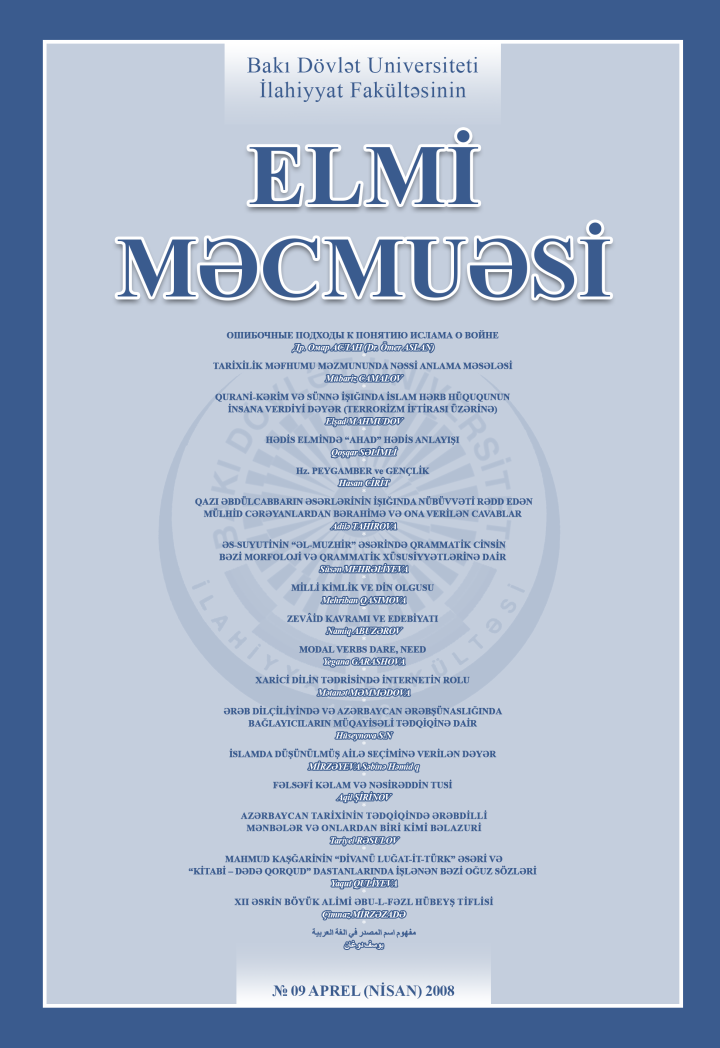The Concept of Ism al-Masdar in Arabic Language
Mefhumu İsmi’l-Masdar fi’l-Lugati’l-Arabiyye
Arabic language has structure like all of langauges. The structure of Arabic consists of three elements: noun, verb and letter. The nouns have been accepted as one of the most important elements in the structure of Arabic language. Also they have a lot of kinds. The infinitives that are one of the most important elements of nouns are divided into. One of the most significant sorts of infinitives are verbal nouns (اسماﺀ المصدر). The verbal nouns have been used in speaking and writing langauge, and also often text of classical literature and text of religious. The verbal nouns are formed from infinitives that are over triple verbs. For example, "غطا" is formed from "اغطاﺀ" and also to (ﻋﻤﻞ) We made effort to study verbal noun, its action make a list of verbal nouns in this article.
İndir
Makale Bilgileri
- Makale Türü Articles
- Gönderildi Nisan 30, 2008
- Yayınlanmış Nisan 30, 2008
- Sayı № 09(09) Nisan 2008
- Bölüm Articles
